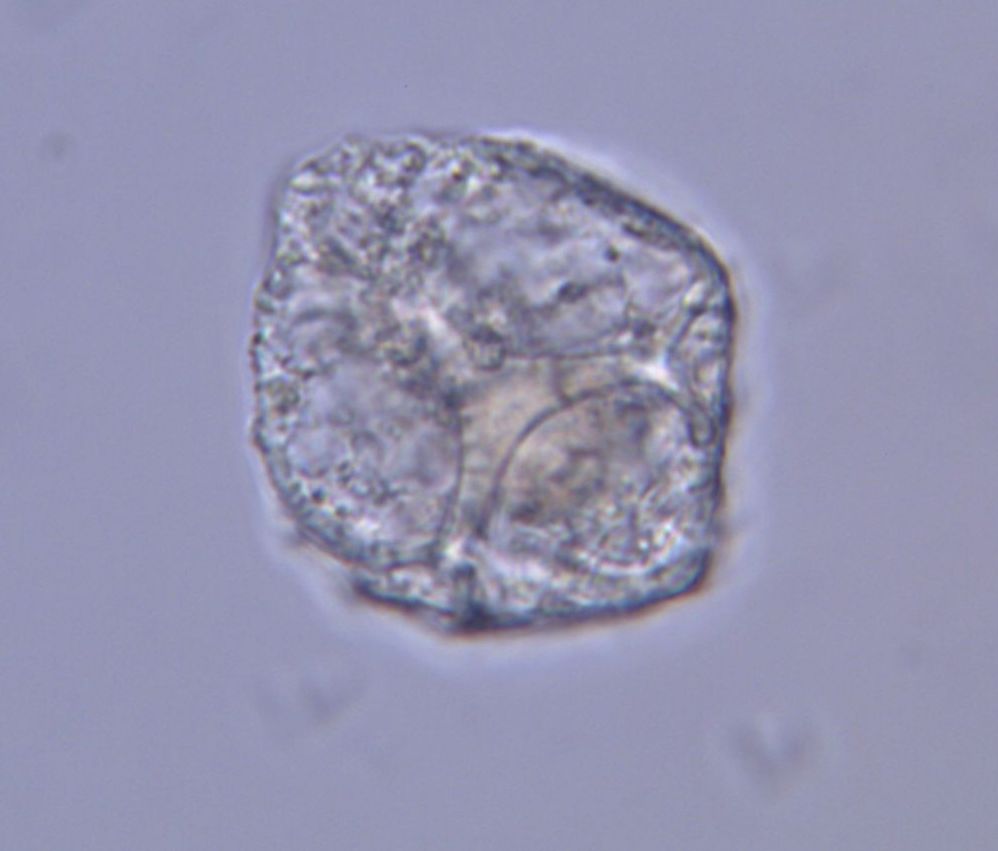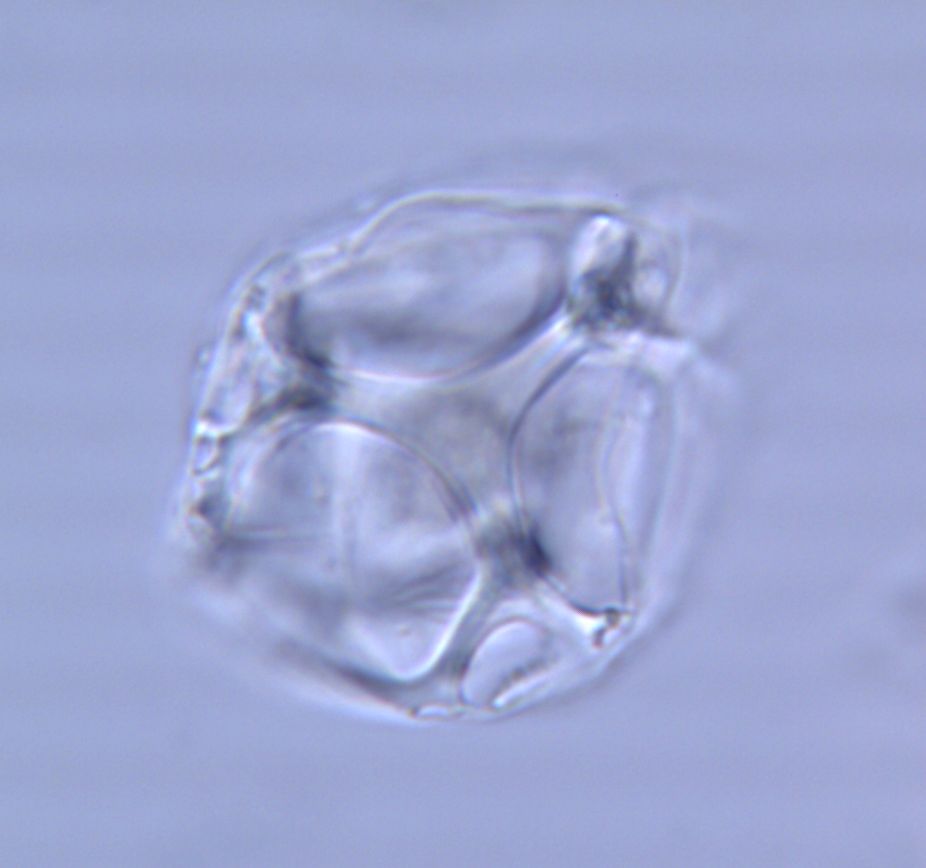Just started to take a look at the Baltic Sea phytoplankton for real. And in the first field of view I see this funny thing, that you would not see in the fresh water samples:

Well, this is perhaps a more estetically justified photo of the same thing:

Now you see only the skeleton.
This is Ebria tripartita (J.H.K. Schumann, 1867) E.J. Lemmermann, 1899, 25×30 µm.
Ok, I admit. It’s not phytoplankton. It’s a heterotrophic flagellate, a member of “an enigmatic group of eukaryotes with an unclear phylogenetic position” as Hoppenrath & Leander (2006) so elegantly put it. But it is counted in the phytoplankton biomonitoring, so I accept it.
The strange thing with this species is that it has an endoskeleton. So it’s a bit like us, humans. Also the name, which has it’s origin in the latin word “ebrius” meaning “drunken”, sounds -at least in the Finnish ears – very human.
But then again it has other features that resemble Dinoflagellates, like the nucleus, on the other hand it has features that makes one think of golden algae. Even for the taxonomists this has been most confusing. Ebria has been wandering across the taxonomic field, from one corner to the other, like not many other species have. A nice description of these adventures can be read in Hoppenrath & Leander (2006), who finally placed the species in protista, in the division Cercozoa.
Ebria tripartita is a species, that has a tremendous long history. It has been found in the sediments of the Baltic, in the depths that correspond with time some 120 000 years ago (Korhola & Grönlund, 1999). Yes. 120 000.
And not only is it widespread in time, it actually swims all over the world too (Tomas (ed.) 1997, Hoppenrath & Leander 2006).
Literature:
Ikävalko, Johanna (1998). Further observations on Flagellates within sea ice in northern Bothnian Bay, the Baltic Sea. Polar Biol 19: 323-329.
Korhola, Atte & Grönlund, Tuulikki (1999) Observations of Ebria tripartita (Schumann) Lemmermann in Baltic sediments. Journal of Paleolimnology 21: 1–8.
Hoppenrath, Mona & Leander, Brian S. (2006) Ebriid Phylogeny and the Expansion of the Cercozoa. Protist, Vol. 157, 279—290.
H. R. Preisig (1994) Siliceous structures and silicification in flagellated protists. Protoplasma 181: 29- 42.
Carmelo R. Tomas (ed.) (1997). Identifying marine phytoplankton. Academic Press. 858 p.
